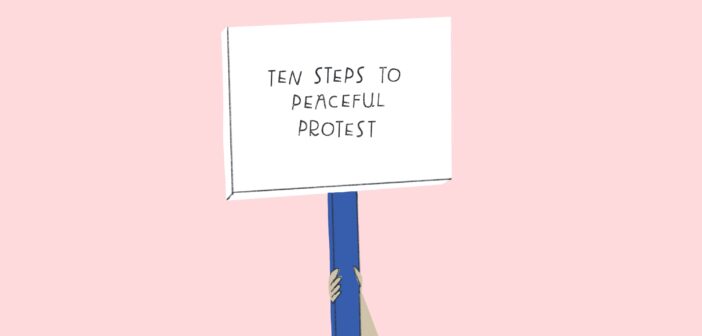The First Amendment gives “the right of the people peaceably to assemble, and to petition the government for a redress of grievances.” In other words, you have the right to protest peacefully. So, how can people do that?
1. Know your rights
The First Amendment protects people’s right to protest in the U.S.
2. Do your research
A person can’t work to solve a problem if they can’t first identify the problem. Protests always focus on a specific issue. For example, Black Lives Matter protests against police brutality.
3. Plan ahead of time to make sure you are prepared for any situation
For example, avoid attending protests alone. Go with people you know and trust so you can look out for one another. Ensure you know how to stay in touch and agree on a meeting place if you get split up. In case you get lost, apps like Google Maps help you share locations with friends.
4. Pack lightly
That means knowing what to bring and what to leave at home. Make sure to take your phone fully charged and a portable battery charger, water, cash, hand sanitizer and wipes, face mask, snacks, umbrella, pen and paper for emergency information and posters. What not to bring: anything expensive like jewelry and anything you don’t want to get arrested with like guns or knives.
5. Remember words are powerful, so make a sign
Your sign should be concise. Readers should read and understand your message quickly. For example, “If God hates gays, why are we so cute?”
6. Dress appropriately with safety in mind
According to Essence Magazine, you should wear a mask, gloves, drawstring hoodie, sneakers, backpack, glasses and goggles and fitted clothing made of moisture-wicking materials.
7. Be aware because troublemakers are everywhere
Most protests are peaceful, but things can change. For instance, in over 10,000 protests during the summer of 2020, The Armed Conflict Location and Event Data Project (ACLED) reported that 95% of protests were peaceful but 5% involved violence. Stay calm and be polite to others to prevent violence. Treat people how you want them to treat you.
8. Watch out for your safety if protests get out of hand
Police can use rubber bullets, pepper spray, water cannons and/or tear gas, depending on where you protest in the world. When protests get out of control, always remember to have, and be prepared to execute, an exit plan.
9. Be prepared to deal with and accept the consequences
Being arrested is a potential consequence protestors have to be aware of. According to AP News, over 10,000 people have been arrested following the George Floyd protests. Tear gas and pepper spray have temporary side effects, which, according to Healthline, may include tearing, itching, burning, temporary blindness, blurry vision and chemical burns.
10. Remember to participate
That means not to give up until change is made. Stay up to date and donate to organizations that tackle the problem. Protest is a great way to make your voice heard, but perseverance is key.

